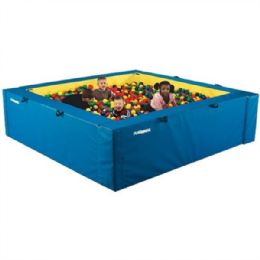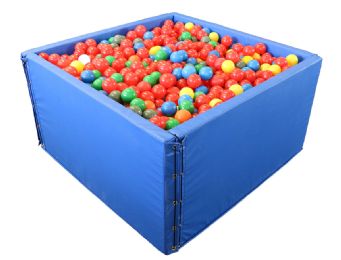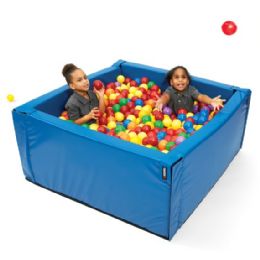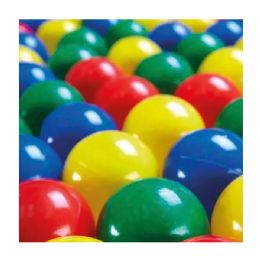






What is Sensory Integration Disorder?
Sensory integration disorders can involve auditory, olfactory, visual, vestibular and proprioceptive delays. Proprioception is the body’s awareness of itself in space and in relation to its parts. Through proprioceptive receptors in the muscles, tendons, ligaments and joints, a child develops an understanding of where his arms, legs, fingers and other body parts are. If a child has a delay in this area, the delay may be expressed in more than one way. They may either seek out stimuli, or be defensive to stimuli. The pediatric ball pit provides a controlled environment for developing sensory integration.
Who Uses Pediatric Ball Pits?
Pediatric ball pits benefit children of all ages who need therapy for fine or gross motor delays, cognitive and neurological delays, and children with “learned non-use” of a limb due to stroke or cerebral palsy.
Some children pursue proprioceptive sense input, making them very active and constantly seeking physical stimulation. They may be under-responsive to typical input, and might search out additional stimuli. A pediatric ball pit satisfies their body’s need for physical input by providing a combination of proprioceptive and tactile activation.
A child who has difficulties with vestibular processing will also benefit from a pediatric ball pit. The support of the balls helps in positioning and balance.
What are the Benefits of a Pediatric Ball Pit?
The colorful balls in a pediatric ball pit are useful in visual tracking skill development. This is advantageous for children with both physical and cognitive disabilities. Pediatric ball pits assist by increasing the function of sensory processing, which can help improve focus and social integration. The gentle weight of the balls helps the child understand the amount of force it takes to move their body through space. As with swimming, the child has to move his or her body against the weight of the balls, which strengthens muscle tone and their core. While playing in the ball pit, the child is motivated to be an active participant in therapy.
Pediatric ball pits help in regulating sensory input, leading to improved concentration, age-appropriate social skills and more befitting environmental stimuli reactions. Pediatric ball pits stimulate or calm as needed for sensory processing disorder regulation. When placed next to a platform, children can jump in, providing a whole-body sensation. When filled to the top, children can propel themselves entirely underneath the balls for a soothing experience.
Pediatric ball pits also improve gross motor activity and body awareness. In the case of learned non-use of a limb or in children with neurological delays, pediatric ball pits enhance low muscle tone, gross motor skills and constraint induced movement therapy. Encouraging movements similar to swimming, but in a safe and dry environment, pediatric ball pits improve confidence and coordination. Pediatric ball pits encourage play, which makes therapy enjoyable, promotes growth, adjustment and development, all in a child-centered environment.
This water-free environment is less messy, free from danger and appropriate for children of all levels of ability while providing multisensory therapeutics useful for stimulation, proprioception, positioning, sensory input and just plain fun for children.
Hulet Smith, OT
Rehabmart Co-Founder & CEO
sd